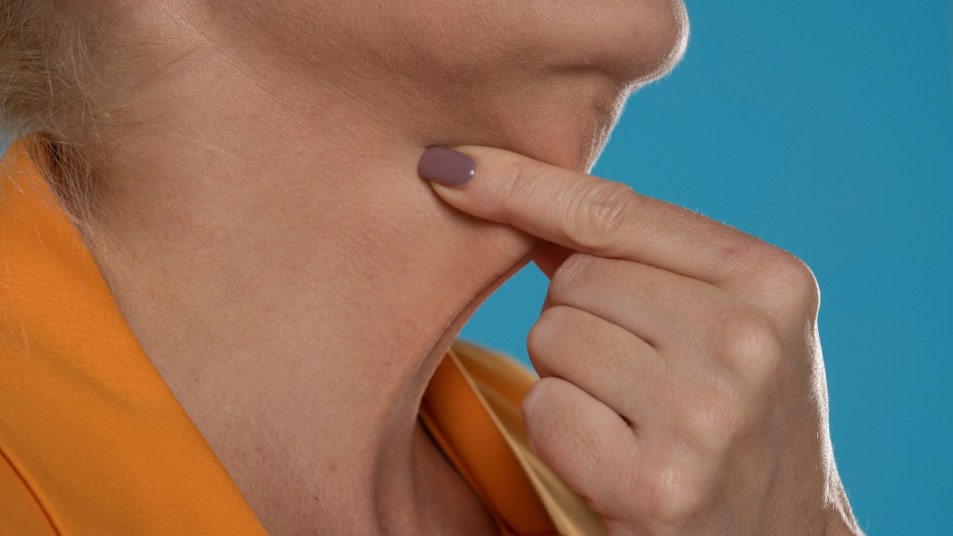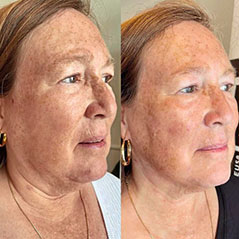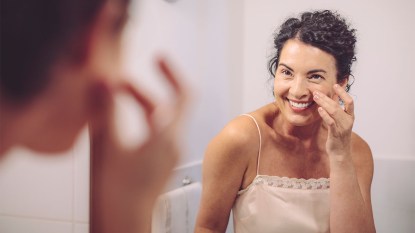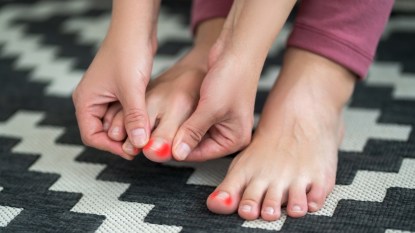60-Year-Old Banishes Sagging Turkey Neck Without Surgery — Here’s How
Get results without extra time or money.

As we age, our bodies change. It’s a normal part of life. But unfortunately, not all of those changes are welcome. Upon reaching their 50s and 60s, many women experience inevitable skin sagging around the neck; this sag is often called “turkey neck” for its resemblance to a turkey’s wattle. While there is nothing inherently wrong with turkey neck, it causes many women to feel ashamed or self-conscious about their appearance. One such woman is Mary Wallace: When she turned 60, Wallace’s sagging neck became a new — and confidence-shattering — issue. As she searched for a fitting solution, she realized that neck-lifting surgery was expensive and time-consuming, and internet “miracle” creams were largely ineffective. Then, Wallace tried a noninvasive, nonsurgical treatment called Morpheus8 — and it improved her sagging skin sorrows immensely.

How does Morpheus8 work?
A Morpheus8 procedure uses a special micro-needling device that combines radio-frequency energy to contour and tighten skin. The device penetrates the skin in three passes — starting 4 millimeters deep and moving up to 1 millimeter deep — generating collagen production and melting away fat while tightening through muscle contraction and skin retraction. Best of all: barely any recovery time.
Why does it work? Because it focuses on improving skin from all sides. “Targeting skin’s inner layers helps it look and feel better from the inside out,” says dermatologist Jennifer Helton, MD.
How exactly does it change skin? Real Self says that with proper application, Morpheus8 can:
- Make acne scars less visible
- Strengthen thin, crepey skin
- Improve the appearance of large pores and fine lines
- Make skin mildly firmer
How much does it cost?
Wallace signed up for three treatments, spaced about a month apart, which is what dermatologists recommend for the best results. Though the procedure was not covered by insurance, as is often the case for cosmetic procedures, Wallace explained that she saw results after her three sessions, and that each cost around $500 — a fraction of the cost of a surgical lift (which can cost almost $6,000 on average).
What is the treatment process like?
During her first treatment, Wallace noted that Morpheus8 was minimally invasive with only brief pain around her jaw and forehead. The practitioner applied numbing cream to her face an hour before the procedure and Wallace also took Tylenol beforehand, which helped with any discomfort.
Right after her hour-long treatment, Wallace recalled that her skin felt red and hot, like she had a sunburn; she wore makeup to cover that until it died down a day later. And after two days, her face looked almost back to normal.
Although Wallace experienced mild side effects, it’s important to keep in mind that your own experience may vary. For example, some patients have complained of side effects like burns, scarring, textural issues, grid marks, and loss of skin volume, according to an analysis done by Real Self. Before deciding to undergo Morpheus8, ask your doctor if the potential risks are worth it.
Am I a good candidate for Morpheus8?
Morpheus8 is an impressive, advanced procedure, but it isn’t a cure-all. Depending on your needs, a more invasive procedure might be more effective. Morpheus8 can’t undo extensive sun damage, dramatically lift and tighten skin, or remedy extremely loose skin or jowls. Consult your doctor to see whether or not a different route would better suit your specific needs.
The Results
For Wallace, the change in her neck after the Morpheus8 procedure was life-changing. After just one treatment, she said her jaw looked more defined and her skin was tighter. Today, after all three treatments, she feels more confident than ever. “I feel so good,” she said. “It was such a lift to my neck — and my spirits.”
This content is not a substitute for professional medical advice or diagnosis. Always consult your physician before pursuing any treatment plan.
A version of this article originally appeared in our print magazine, Woman’s World.













